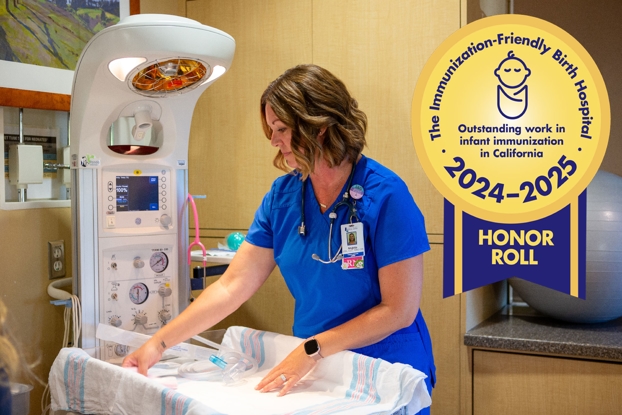Bringing Awareness to SIDS
- Category: Health & Wellness, Birthing
- Posted On:
- Written By: Cindy Blifeld, MD

October is Sudden Infant Death Syndrome (SIDS) Awareness Month. This is a good time for us to review the definition of SIDS, what we know about the causes of SIDS and what we can do to implement best prevention strategies. In addition, it is a time for us to witness and appreciate the success of public health campaigns around the world.
What is Sudden Infant Death Syndrome (SIDS)
SIDS is defined as the sudden death of an infant younger than one year of age, which remains unexplained after a thorough case investigation, including the performance of a complete autopsy, examination of the death scene, and a review of the clinical history. SIDS is the leading cause of infant mortality between one month and one year of age in the United States. It has also been called “cot death” or “crib death.”
The risk of SIDS in the U.S. is actually quite small -- less than 1 case per 1,000 live births. Some studies show a high-risk in specific populations, including that the risk is 2-3 times higher than the national average for black and American Indian Indian/Alaskan native children. There is also a disproportionately high rate -- 15-20 percent -- of cases occurring in childcare settings. There is a small increased risk in boys versus girls in some studies.

Because of the wide-ranging public health campaigns to decrease the incidence of SIDS, most people understand that the incidence has declined drastically in this country and in other countries that have adopted policies encouraging non-prone sleeping through campaigns like the "Back to Sleep" campaign. These campaigns were promoted initially in Europe, Australia, and New Zealand and eventually the U.S.
Since the mid-1980s, the incidence of SIDS has declined by more than 50 percent in the U.S. The largest reduction occurred after 1992 when the American Academy of Pediatrics issued the recommendation for placing infants in the supine (lying face upward) position for sleep. Between 1992 in 2001, the rate fell from 1.2 to 0.56 cases per 1,000 live births. The proportion of infants reported to be sleeping in the supine position increased from 13 to 72 percent during this time. Since that time, the rate has remained relatively constant in this country and others.
Research in SIDS Prevention
Efforts to further decrease this occurrence rate are directed at improving compliance with recommendations and research to identify the causes of SIDS.
In the United States, a landmark study called the “Collaborative SIDS Study” helped us understand the epidemiology of SIDS. This was a multi-centered, population-based, case-controlled project that included 10 percent of live births in the U.S. This was a remarkably inclusive effort, which makes results of the study even more applicable to the general population.
This study was published in 1988, before the widespread adoption of supine sleep positioning. The study showed that the median age of SIDS death was 11 weeks of age, with a peak incidence between 2 and 4 months. Additionally, 90 percent of cases occurred before 6 months of age.
This distribution reinforces the notion that SIDS occurs during critical stages of development and maturation. Importantly, this study demonstrated that universal screening for high-risk infants would not be useful because there were no strongly predictive or diagnostic characteristics of mothers or infants that could be used to screen for the condition. This is in obvious contrast to screening for metabolic disease or specific genetically identifiable disease conditions.
Risk Factors
However, the landmark study identified numerous risk factors that are “consistently identified independent risk factors for SIDS.”
These include:
Maternal Factors:
- Young maternal age (under 20 years of age)
- Maternal smoking during and after pregnancy
- Maternal drug use including alcohol and other drugs during and after pregnancy
- Late or no prenatal care
Infant and Environmental Factors
- Prone sleeping position
- Sleeping on a soft surface and/or with accessories such as loose blankets or pillows
- Bed-sharing
- Overheating
- Being the sibling of a previous SIDS victim
- Twins
What do we know about the causes of SIDS?
Are there underlying infant vulnerabilities or genetic factors? We don’t fully understand the cause of SIDS and there is still a significant amount of research devoted to this topic.
The current construct for thinking about SIDS includes what we call a triple risk or triple hit model. This model suggests that SIDS occurs in infants with an underlying variability who experience a trigger event at a vulnerable stage in the development of the central nervous system or even the immune system. Scientists have identified brainstem abnormalities and maturational delays related to cardiorespiratory and neuroregulatory control.
These include abnormalities in the regulation of arousal to respiratory and cardiac signals and sleep pattern signals. There is some evidence to suggest that the intrauterine environment plays a role, implying that subtle brain disorders may occur during development and before birth. Abnormalities in serotonin signaling play a role. Genes encoding a variety of functional entities such as cardiac ion channels, autonomic nervous system components, serotonin and other neuroregulatory molecules, immune system components like C4 and interleukins (IL-10) and genes encoding heat shock proteins.
The largest environmental factor that has been identified is a prone sleeping position. The mechanism for why the prone sleeping position increases the risk of SIDS is not known. Clearly, this is unsatisfying.
Some factors that may contribute to this include decreased behavioral arousal, longer duration of sleep, longer obstructive events with longer intervals between obstruction and arousal in infants sleeping in the prone position. Some studies have suggested prone sleeping predisposes to suffocation precipitated by decreased arousal.
Soft bedding and overheating may contribute to this. There are inconsistent results that suggest that cardiac dysfunction may contribute. This would represent a very small percentage of cases and is primarily focuses on abnormalities in the QT interval.
Infection can cause an increased risk in a subgroup of unexplained sudden death syndrome of infancy but its role and SIDS is not clear. This may be related to an exaggerated pro-inflammatory response as was suggested by factors that concentrate on the compliment and interleukin systems.
What we do know about inherent and environmental factors is that most cases of SIDS occur between the second and fourth months of life and this is a period of sequential developmental changes in all systems, including those that control ventilatory functions, sleep/wake patterns and cardiac function in otherwise very normal infants. Thus, this represents at least a circumstantial suggestion that this time of autonomic maturation/development predisposes infants to sudden death if other factors are present.
From a practical standpoint, a public health viewpoint and for the purposes of how we can educate parents and childcare providers, our focus should be on prevention strategies. Toward this effort, we should be talking to all parents about how to minimize the risk of SIDS from the very beginning. This includes prenatal visits, hospitalizations during pregnancy and the routine well-visits that remain extremely important for infants and their providers.
SIDS Prevention with Best Practices
Like many topics that may be controversial, despite massive public health and education efforts to change habits, unsafe practices are still perpetuated in association with certain alternative views. Despite that, we continue to promote prevention strategies of safe sleep practices and these include:
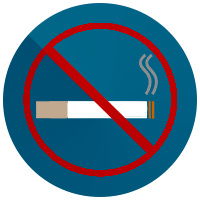
Mothers should avoid the use of tobacco, alcohol and other drugs during pregnancy and after birth. Secondary smoke exposure from any source should be avoided.

Pregnant women should receive prompt and regular prenatal care and follow the recommendations of their obstetricians.
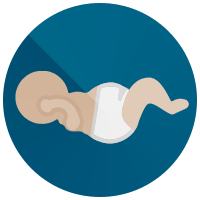
All infants, including infants with a history of prematurity over the age of 32 weeks gestation or gastroesophageal reflux, should be placed in the SUPINE SLEEP POSITION FOR EVERY SLEEP. The rare exception would be an infant with abnormal swallowing mechanisms due to neurologic dysfunction, and the parents should work with the specialty provider to identify the safest sleep position.

Car seats, infant carriers, strollers, and swings or any other “sitting device” should not be used for routine sleep. Obviously, the benefits of car seats during driving time far outweigh the risk of SIDS during that time interval.
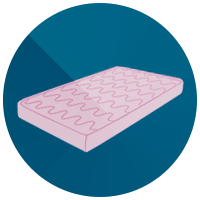
Swaddling should only be used in infants who are placed in the supine position for sleep and they should be discontinued as soon as the infant is old enough to attempt to roll over. Infants should always be placed on a firm surface that is certified to be used for infant bedding. Do not allow anything but a sheet in between the surface and the infant. Avoid any bedding designed for older children and/or adults, including soft sleep surfaces like sofas, polystyrene filled cushions, sheepskin bedding, adult or child beds and air mattresses or air beds. Do not have things inside the bed area such as pillows, stuffed toys, blankets, sheepskins or bumper pads.

Room-sharing -- but not bed-sharing -- should be encouraged through the first year of life.

Avoid overheating. Infants who are placed in a sleeper need little else for comfortable sleep if the room is a comfortable temperature for a “lightly clothed adult.” Do not put infants to sleep next to a radiator, heater or in direct sunlight.

A pacifier offered at sleep initiation may be protective. Allow the pacifier to fall out of the infant’s mouth once they are sleep and do not attach it to a strap or cord. One may wish to delay this in breastfeeding babies until breastfeeding is well-established although there is little evidence to substantiate that.

Breastfeeding is encouraged for many reasons and it may have a small protective effect against SIDS.
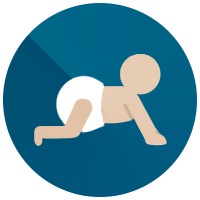
Prone positioning while the infant is awake and observed is encouraged. This is “tummy time.” This helps infants develop shoulder girdle strength and in addition, avoids development of “a flathead” or occipital plagiocephaly.

There is NO EVIDENCE that any type of home monitor helps in the prevention of SIDS.
In Summary
SIDS is still the leading cause of infant mortality between one month and one year of age in the United States. Public health measures have resulted in a remarkable decrease in SIDS deaths but the incidence still remains at the risk of just less than 1 in 1,000 live births.
We still do not understand the fundamental cause of SIDS and it may be secondary to multiple factors. We do believe that it includes a “triple-hit” model where a vulnerable infant, because of genetic or prenatal factors, interacts with an environmental trigger at a critical time during neurological development that results in SIDS. Worldwide, SIDS deaths have decreased through diligent public health measures and educational campaigns including the campaign of “BACK to SLEEP” in the United States. The best prevention strategies include excellent and timely prenatal care, avoidance of drugs and alcohol during and after pregnancy, always placing infants in the supine sleep position on bedding designed specifically for infants, avoiding bed-sharing, promoting room-sharing, and avoiding secondary smoke exposure in addition to others detailed above.
Despite firmly held biases that bed-sharing does not increase the risk of SIDS if “one is careful,” there is no data to support this. Multiple societies including the American Academy of Pediatrics, the Canadian Paediatric Society, and the United Kingdom Department of Health support these safe sleep practices.
Newborn infants are dependent upon others to provide care to allow them to grow and develop to their full potential. “Safe sleep” is simple to implement and is something that parents can be empowered to do toward getting their newborns off to a great start. Parents can certainly address any of their concerns regarding safe sleep practices with their infant’s care provider.
Resources
There are a number of resources for parents that include:


